Exchange Online vs On-Premises: The Ultimate 2025 Comparison
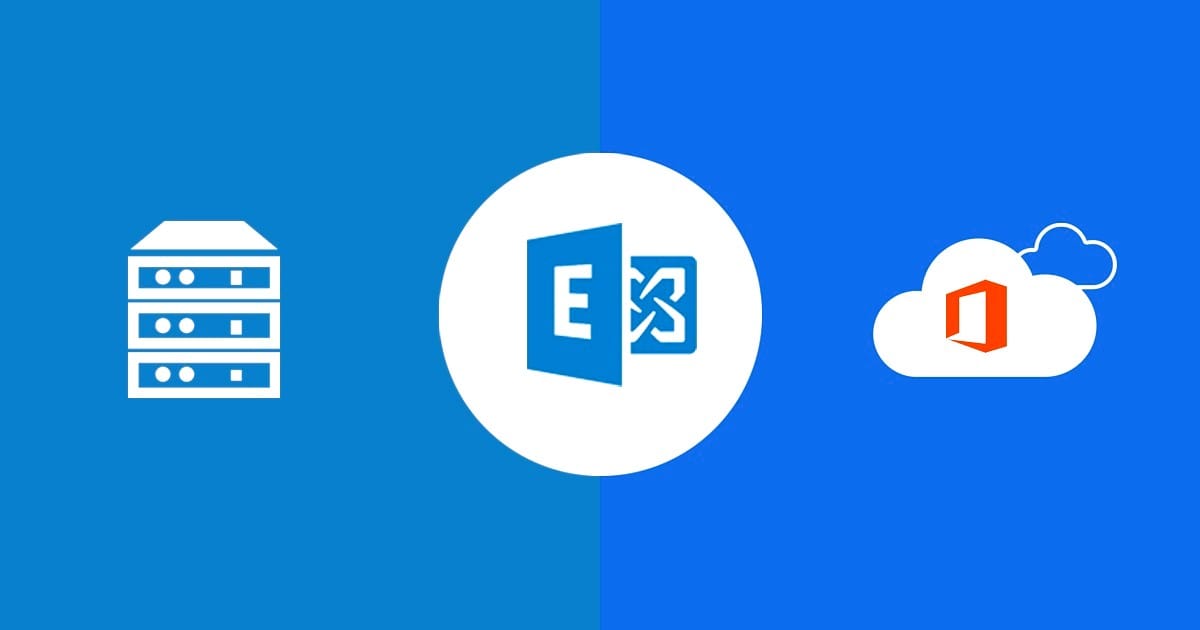
The Brutal Math: Cloud vs On-Premises
Real 5-Year Total Cost (100 users):
- Exchange On-Premises: $180,000 ($80K hardware + $40K licenses + $60K labor)
- Exchange Online: $72,000 ($12/user/month × 100 × 60 months)
- You save: $108,000 (60%) by going cloud
After migrating 1,200+ businesses to Exchange Online over 9 years, we've seen the same pattern: Cloud wins on cost, time, and risk for 95% of companies.
But that 5%? They have real reasons to stay on-premises. Let's figure out which camp you're in.
Quick Decision: Should You Migrate?
Stay On-Premises ONLY If:
- Data sovereignty laws: Your country legally bans storing email in Microsoft's cloud (Iran, China with specific regulations)
- Zero internet: You have no reliable internet connection (offshore rigs, remote military bases)
- Ultra-low latency required: You need <5ms response time to email server (rare: high-frequency trading apps)
- Legacy app dependency: Critical software requires direct server access that APIs can't replace
Migrate to Exchange Online If:
Everything else. Seriously. If you have:
- 10 Mbps internet or better
- Fewer than 5,000 users
- Standard business email needs
- Want to stop worrying about server crashes at 3 AM
You should be in the cloud.
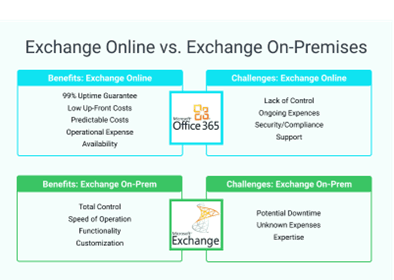
At-a-Glance Comparison: Exchange Online vs. On-Premises
| Feature | Exchange Online (Microsoft 365) | Exchange On-Premises |
|---|---|---|
| Deployment & Architecture | SaaS model. Microsoft owns and manages all infrastructure in a multi-tenant environment. | IaaS/Physical model. You own and manage servers, storage, and networking in a single-tenant environment. |
| Cost Model & Licensing | OPEX Model: Predictable per-user monthly/annual subscription fee. | CAPEX Model: High upfront costs for hardware, perpetual server licenses, and Client Access Licenses (CALs). |
| Management & Maintenance | Microsoft handles all server installation, patching, updates, and hardware lifecycle. | Your IT team is responsible for all installation, patching (CUs/SUs), monitoring, and hardware refreshes. |
| Scalability & Performance | Near-limitless and on-demand. Add users by assigning licenses. Performance managed by Microsoft. | Limited by physical hardware. Scaling requires significant planning and capital investment. |
| Security & Compliance | Shared responsibility. Includes advanced features like EOP &; Defender. Inherits Microsoft's vast compliance certifications. | Full responsibility on you. Requires third-party tools for comparable protection and you must achieve your own compliance audits. |
| Control & Customization | Sandboxed administrative control. No access to underlying servers. Modern API (Graph) for integration. | Absolute root-level control. Full customization and deep integration with legacy systems. |
| Data Residency & Sovereignty | Data residency in a chosen geo-region. Multi-Geo available for large enterprises. | Absolute control over the physical location of data. |
| Reliability & Disaster Recovery | Financially-backed 99.9% SLA. Geo-redundancy is built-in by default. | No built-in SLA. Requires complex and costly site-resilient DAGs for disaster recovery. |
| Integration & Ecosystem | Deep, seamless integration with Microsoft 365 (Teams, SharePoint, OneDrive, etc.). | Requires hybrid configuration for M365 integration, which can be complex. Better for some legacy apps. |
| User Experience | Access to the latest features (e.g., Copilot) and a consistent experience across all devices. | Modern experience, but feature updates are tied to major version releases and manual upgrades. |
| Backup, Archiving & Retention | Native data protection, but third-party backup is a best practice. Includes large, auto-expanding archives. | Full responsibility for backup and recovery. Archiving requires careful storage planning. |
| Authentication & Identity | Modern Authentication (MFA, Conditional Access) is the standard. Legacy auth is being disabled. | Supports legacy protocols. Modern Authentication requires hybrid configuration. |
| Innovation & Feature Updates | Continuous, automatic updates and feature rollouts from Microsoft. | Infrequent updates via Cumulative Updates and major version upgrades that require manual deployment. |
| Network & Connectivity | High dependency on reliable, high-bandwidth internet connectivity for all users. | Primarily dependent on internal LAN performance; internet is mainly for external mail flow. |
| Support & Lifecycle | Support is included with the subscription. It's an evergreen service with no end-of-life. | Governed by fixed product lifecycle policies (end-of-support dates). Support requires separate contracts. |
| Reporting & Analytics | Rich, built-in analytics on usage, security, and adoption via the M365 admin center. | Basic reporting focused on server health and message tracking via PowerShell or EAC. |
| Business & Strategic Considerations | Frees IT to focus on strategic value, lower TCO for most organizations, and reduces operational risk. | Ensures absolute control for specific regulatory or technical needs but at a high operational cost and complexity. |
Deployment & Architecture
The fundamental difference between Exchange Online and On-Premises lies in their architecture and deployment models. This choice dictates who owns the hardware, who manages the software, and how the entire system is structured.
Deployment Model
Exchange On-Premises follows a traditional IaaS (Infrastructure as a Service) or physical deployment model. Your organization is responsible for procuring, installing, and managing everything: physical servers, storage arrays, network equipment, and the Windows Server operating system.
You install the Exchange Server software on this hardware, making you the owner and operator of the entire stack .
Exchange Online is a SaaS (Software as a Service) solution. Microsoft owns, manages, and operates the entire underlying infrastructure in its global data centers.
You consume the email service through a subscription, with no direct access to or responsibility for the physical servers, storage, or operating systems. Your interaction is purely at the application and administration level.
Ownership and Control
This is a primary differentiator. With Exchange On-Premises, you have complete ownership and control. You decide the hardware specifications, network configuration, update schedules, and all other architectural details. This provides maximum flexibility but also carries maximum responsibility.
With Exchange Online, you cede direct control of the infrastructure to Microsoft. While you have extensive administrative control over your tenant's configuration (mail flow rules, policies, etc.), you do not control the underlying hardware or when platform-level updates are applied. This is a trade-off of control for convenience and expertise.
Infrastructure Requirements
Exchange On-Premises has significant infrastructure requirements, including:
- Physical servers that meet Microsoft's specifications.
- Sufficient storage (often a mix of SSD and HDD) for mailboxes and logs.
- A robust network infrastructure, including load balancers.
- Physical data center space with power, cooling, and security.
- Valid licenses for Windows Server and Exchange Server.
Exchange Online has minimal infrastructure requirements. The primary need is a reliable, high-bandwidth internet connection for your users to access the service. All server-side infrastructure is handled by Microsoft.
Multi-tenant vs. Single-tenant Environment
Exchange On-Premises is a classic single-tenant environment. The entire infrastructure—servers, databases, and software—is dedicated solely to your organization. This provides complete isolation.
Exchange Online is a multi-tenant service. Your organization';s data resides on shared infrastructure alongside data from other Microsoft customers.
However, Microsoft employs robust logical isolation at the tenant level to ensure data is segregated and secure, preventing one tenant from accessing another's data.
Server Topology (Roles, DAGs, etc.)
In an Exchange On-Premises environment (specifically Exchange 2016/2019), the architecture has been simplified to two main server roles: the Mailbox server and the Edge Transport server.
The Mailbox server role contains all the core components, including client access services and transport services. High availability is achieved through Database Availability Groups (DAGs), which are groups of Mailbox servers that host copies of databases for automatic failover . This "every server is an island" architecture reduces inter-server communication and isolates failures.
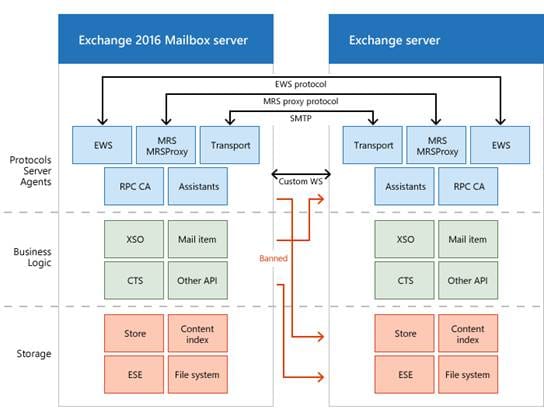
Protocol layer communication between Exchange servers, illustrating the "every server is an island" architecture
The architecture of Exchange Online is far more complex and largely opaque to the customer. It is a massive, globally distributed system built on the same core Exchange principles (like DAGs) but at an unprecedented scale. Microsoft manages the entire topology, ensuring resilience and performance without requiring customer intervention.
Datacenter Location and Hosting Model
With Exchange On-Premises, you choose the datacenter location. This could be your own on-site server room or a co-location facility. You have absolute control over the physical location of your data.
With Exchange Online, your data is hosted in Microsoft's global network of data centers. During tenant setup, you select a primary region for your data to reside at rest.
For larger enterprises, Microsoft offers Multi-Geo capabilities to distribute mailbox data across different geographic regions to meet data residency requirements and optimize performance.
Cost Model & Licensing
The financial implications of choosing between Exchange Online and On-Premises are profound, representing a shift from capital expenditure (CAPEX) to operational expenditure (OPEX).
Licensing Type (Server + CALs vs. Subscription)
Exchange On-Premises uses a perpetual licensing model. You must purchase:
- An Exchange Server license for each server you deploy (Standard or Enterprise edition).
- A Client Access License (CAL) for every user or device accessing the server (Standard or Enterprise CAL).
Exchange Online is licensed via a per-user subscription model. Each user needs a User Subscription License (USL), typically paid monthly or annually. Plans like Exchange Online Plan 1, Plan 2, or broader Microsoft 365 bundles (e.g., E3, E5) include the Exchange license .
CAPEX vs. OPEX Model
This is the core of the financial debate. The Total Cost of Ownership (TCO) is generally calculated as TCO = CAPEX + OPEX .
- Exchange On-Premises is CAPEX-heavy. It requires a large upfront investment in hardware (servers, storage, networking) and perpetual software licenses. Ongoing costs (OPEX) include power, cooling, maintenance contracts, and IT staff salaries.
- Exchange Online is an OPEX model. There are minimal to no upfront capital costs. The cost is a predictable, recurring operational expense based on the number of users and subscription plan.
Upfront Hardware and Setup Cost
The upfront cost for Exchange On-Premises is significant. This includes not just the servers but also rack space, power distribution, network switches, and load balancers. The initial setup and configuration also require considerable IT staff hours or consultant fees.
For Exchange Online, the upfront cost is near zero. The primary "setup" cost is related to the migration project itself, not hardware acquisition.
Ongoing Maintenance Costs
For Exchange On-Premises, ongoing costs are numerous and can be unpredictable. They include:
- Hardware maintenance contracts and replacement parts.
- Electricity for power and cooling.
- Data center rental or real estate costs.
- Salaries for specialized IT staff to manage and maintain the environment.
- Software Assurance for upgrade rights.
For Exchange Online, the ongoing cost is almost entirely the predictable subscription fee. Microsoft handles all hardware maintenance, power, and data center operations.
Long-term Total Cost of Ownership (TCO)
While Exchange Online often appears more expensive on a simple month-to-month comparison, a true TCO analysis must factor in all the hidden costs of an on-premises deployment. For most small to medium-sized businesses, Exchange Online consistently results in a lower TCO.
For very large organizations (e.g., thousands of users), the TCO calculation can be more complex. In some niche cases, a highly optimized on-premises deployment could theoretically have a lower TCO over a very long-term horizon (e.g., 7-10 years), but this scenario is becoming increasingly rare due to the operational efficiencies and integrated security of the cloud .
Management & Maintenance
The day-to-day operational burden is one of the most significant differences between the two models, directly impacting IT staff workload and required expertise.
Server Installation and Configuration
Exchange On-Premises requires a complex installation and configuration process. Administrators are responsible for preparing Active Directory, installing Windows Server, setting up prerequisites, and then running the Exchange Server setup. This is a multi-stage process that demands careful planning and execution.
With Exchange Online, there is no server installation. The service is provisioned by Microsoft. Administrators connect to a pre-built environment and begin configuring their tenant-specific settings, such as domains and user accounts.
Patching and Updates (CUs, SUs)
This is a critical responsibility for Exchange On-Premises administrators. They must regularly apply Cumulative Updates (CUs) and Security Updates (SUs) released by Microsoft. This process often requires planned downtime, extensive testing, and can be a significant time commitment to ensure servers remain secure and supported.
In Exchange Online, Microsoft manages all patching and updates seamlessly in the background. New features and security fixes are rolled out continuously with no action required from the customer and typically without any user-facing downtime.
Monitoring and Health Management
Exchange On-Premises administrators must implement their own monitoring solutions to track server health, performance, and service availability. This involves using tools like System Center Operations Manager (SCOM), third-party applications, or custom PowerShell scripts.
Exchange Online includes a built-in Service Health Dashboard in the Microsoft 365 admin center. It provides real-time status on service availability, performance degradation, and planned maintenance. While customers can't see server-level metrics, they get a clear view of the service's health as it pertains to their tenant.
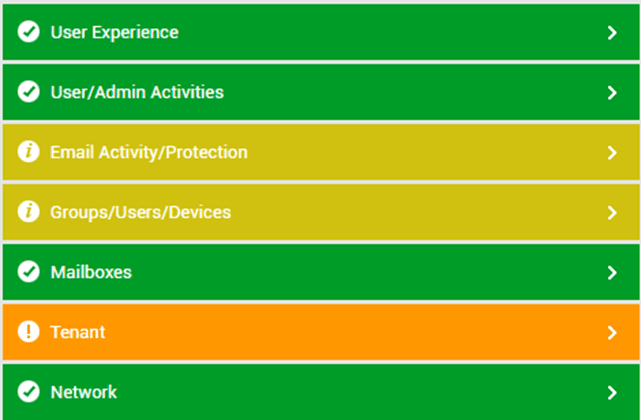
The layer model for monitoring Microsoft Exchange Online, covering user experience, activities, mailboxes, and more
IT Staffing and Skill Requirements
Running Exchange On-Premises requires a dedicated team of IT professionals with deep expertise in Exchange Server, Windows Server, Active Directory, networking, and storage. This specialized knowledge is crucial for deployment, maintenance, and troubleshooting. For organizations lacking this in-house expertise, services like Medha Cloud's Exchange Server support plans can fill the gap, offering everything from one-time incident support to fully managed services. Furthermore, since Exchange runs on a Windows foundation, having access to Emergency Windows Server Support | Expert Assistance 24/7 is a critical backstop.
Managing Exchange Online requires a different skill set, focused more on cloud service administration, identity management (Azure AD/Entra ID), and security policy configuration rather than infrastructure management. The need for deep-level hardware and OS troubleshooting is eliminated.
Scalability & Performance
An organization's needs are not static. The ability to scale resources up or down and maintain optimal performance is a key consideration.
User Capacity and Storage Scalability
With Exchange On-Premises, scalability is limited by your hardware. To add more users or increase storage, you must physically add more servers, CPU, RAM, or disk drives. This is a capital-intensive process that requires significant planning and lead time.
Exchange Online offers near-limitless scalability. Adding new users is as simple as purchasing and assigning new licenses. Mailbox storage is determined by the subscription plan, with high-capacity options (e.g., 100 GB per user) and auto-expanding archives available, removing the need for manual storage management .
Performance Optimization
Optimizing performance for Exchange On-Premises involves tuning the server hardware, balancing database workloads across DAG members, and managing network latency within the data center. The administrator has full control to identify and resolve bottlenecks at the hardware and software level.
For Exchange Online, performance optimization is a shared responsibility. Microsoft manages the server-side performance. The customer's responsibility is to ensure optimal network performance between their users and the Microsoft cloud. This includes managing local network egress, bandwidth, and latency .
Security & Compliance
In today's threat landscape, security and compliance are paramount. The two models present different approaches to securing messaging data.
Data Security Responsibility
With Exchange On-Premises, the security responsibility lies entirely with your organization. You are responsible for physical data center security, network security (firewalls), server hardening, patching, and implementing all security configurations.
Exchange Online operates on a shared responsibility model. Microsoft is responsible for the security *of the cloud* (physical data centers, network, host servers). You, the customer, are responsible for security *in the cloud* (configuring your tenant securely, managing user access, protecting endpoints, and defining data governance policies).
Authentication Methods
Exchange On-Premises has historically supported legacy authentication protocols like Basic Auth and NTLM. While it can be configured for Modern Authentication (OAuth 2.0) in a hybrid setup, it is not the default for older clients.
Exchange Online strongly pushes for and defaults to Modern Authentication. This enables critical security features like Multi-Factor Authentication (MFA) and Conditional Access policies, which are significantly more secure than legacy protocols. Microsoft is actively disabling Basic Auth across Exchange Online to improve security.
Anti-Spam and Anti-Malware Protection
Exchange On-Premises includes built-in anti-spam and anti-malware agents, but they require careful configuration and may not be as effective as dedicated cloud services. Many organizations supplement them with third-party security gateways (e.g., Proofpoint, Barracuda).
Exchange Online includes Exchange Online Protection (EOP) by default. EOP is a robust, multi-layered cloud filtering service that benefits from Microsoft's vast threat intelligence network, providing excellent protection against spam, malware, and phishing attempts out of the box .
Advanced Security (ATP, DLP, eDiscovery)
While some of these features exist in Exchange On-Premises, they are generally more powerful, integrated, and easier to manage in Exchange Online and the broader Microsoft 365 ecosystem.
- Threat Protection: Microsoft Defender for Office 365 (formerly ATP) provides advanced protection against zero-day threats, malicious URLs, and impersonation attacks.
- Data Loss Prevention (DLP): Rich, pre-configured DLP policies help identify and protect sensitive information across Exchange, SharePoint, and Teams.
- eDiscovery & Legal Hold: The Microsoft Purview compliance portal offers a unified solution for placing content on hold and running eDiscovery searches across the entire M365 suite.
Compliance Certifications
For Exchange On-Premises, achieving compliance with standards like ISO 27001, HIPAA, or GDPR is your organization's responsibility. You must undergo the audits and prove your infrastructure and processes meet the requirements.
With Exchange Online, Microsoft maintains a vast portfolio of global and industry-specific compliance certifications. By using the service, you inherit many of these controls, significantly simplifying your own compliance efforts .
Control & Customization
The level of granular control and the ability to customize the environment is a classic trade-off between on-premises and cloud solutions.
Administrative Control and Customization
Exchange On-Premises offers the ultimate level of control. Administrators have root-level access to the servers and can modify virtually any aspect of the configuration, integrate deeply with other on-premises systems, and apply custom scripts without restriction. This is ideal for organizations with unique, complex requirements or those needing to integrate with legacy applications that are incompatible with the cloud.
Exchange Online provides extensive administrative control through the Exchange Admin Center (EAC) and PowerShell, but it is sandboxed within the service. You cannot access the underlying servers, modify the core application code, or perform customizations that would affect the stability or security of the multi-tenant environment. Control over the timing of major platform updates is also relinquished to Microsoft.
Integration with Legacy or Third-Party Apps
Exchange On-Premises often provides more flexibility for integrating with older, legacy applications that may rely on outdated protocols or direct server access, which are not supported in Exchange Online. It can also be easier to set up complex SMTP relay scenarios for on-premises devices and applications.
Exchange Online focuses on modern integration methods, primarily through the Microsoft Graph API. While this is incredibly powerful for new development, it may require legacy applications to be updated or replaced. For third-party integrations, the ecosystem is vast, but it is geared towards modern, API-driven solutions.
Data Residency & Sovereignty
For many organizations, particularly in regulated industries or certain geopolitical regions, controlling the physical location of data is a non-negotiable requirement.
With Exchange On-Premises, you have absolute data sovereignty. You control the exact physical location of your servers and data, ensuring it never leaves your premises or a specific country's borders without your explicit action.
Exchange Online addresses this through data residency commitments. When you create a Microsoft 365 tenant, you select a geo where your core customer data at rest will be stored. For large, multinational corporations, Microsoft offers Multi-Geo Capabilities, allowing a single tenant to store data for different users in various Microsoft 365 datacenter geos to meet regional data residency needs.
Reliability, Availability & Disaster Recovery
Ensuring the mail system is always available is a top priority. The approaches to achieving high availability (HA) and disaster recovery (DR) differ significantly.
High Availability and SLA
Exchange On-Premises HA is achieved by deploying a Database Availability Group (DAG). To achieve site resilience (DR), you must stretch the DAG across two or more geographically separate data centers. The reliability and uptime are entirely dependent on the quality of your design, hardware, and operational discipline. There is no financially-backed Service Level Agreement (SLA) other than the one you create for yourself.
Exchange Online is built on a massive, geo-redundant infrastructure. Data is replicated across multiple data centers within a region automatically. Microsoft provides a financially-backed SLA of 99.9% uptime . This offloads the immense complexity and cost of building and maintaining a site-resilient architecture from the customer.
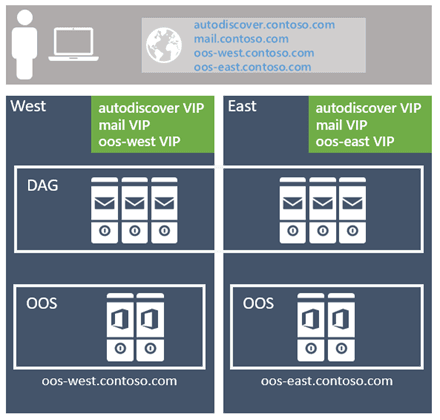
Microsoft's preferred architecture for an Exchange 2019 site-resilient datacenter pair, a complex setup required for on-premises disaster recovery
Backup and Disaster Recovery
For Exchange On-Premises, backup and recovery are the administrator's responsibility. While Exchange Native Data Protection (using multiple database copies) reduces the need for traditional backups, many organizations still use them for point-in-time recovery. A comprehensive DR plan must be created, documented, and tested regularly.
Exchange Online includes native resilience features like mailbox replication and deleted item recovery. However, these are not a substitute for a true backup. They do not protect against all data loss scenarios (e.g., ransomware corruption, accidental or malicious mass deletion). Therefore, using a third-party cloud-to-cloud backup solution is a widely recommended best practice for comprehensive data protection.
Integration & Ecosystem
A modern messaging platform does not exist in a vacuum. Its ability to integrate with other productivity and business tools is crucial for unlocking its full value.
This is an area where Exchange Online has an overwhelming advantage. As a core component of the Microsoft 365 suite, it is deeply and seamlessly integrated with:
- Microsoft Teams: Calendar information, user presence, and meeting scheduling are all powered by Exchange Online in the background.
- SharePoint Online & OneDrive: Used for storing and sharing files attached in Outlook.
- Azure Active Directory (Entra ID): Provides a single, unified identity for authentication and access control across all services.
- Microsoft Graph API: A single, powerful endpoint for developers to build applications that interact with data across the entire Microsoft 365 ecosystem.
While Exchange On-Premises can be integrated with other systems, it is often more complex and lacks the deep, native connections that define the Microsoft 365 experience. For example, integrating on-premises mailboxes with Microsoft Teams functionality requires a complex hybrid configuration.
User Experience & Accessibility
For end-users, the experience should be seamless regardless of the underlying architecture. Microsoft has worked to create consistency across platforms.
The user experience in modern versions of Outlook and Outlook on the web (OWA) is largely consistent whether connecting to Exchange Online or a modern Exchange On-Premises server. Both support rich features and a modern interface.
However, Exchange Online often provides a superior experience in a few key areas:
- New Features: Users get access to the latest features, such as AI-powered assistance (Copilot) and improved search, as soon as they are released to the cloud.
- Mobile Experience: The Outlook mobile app is highly optimized for connecting to Exchange Online.
- Global Performance: For international organizations, Exchange Online's global network and Multi-Geo capabilities can provide lower latency and better performance for users located far from the company's home data center.
Hybrid & Migration Scenarios
For many organizations, the journey from on-premises to the cloud is not an overnight switch. A hybrid deployment, where some mailboxes are on-premises and some are in Exchange Online, is a common transitional state or even a long-term strategy.
A Hybrid Configuration creates a seamless link between your on-premises Exchange organization and Exchange Online. It enables features like a unified Global Address List (GAL), secure mail flow between the two environments, and free/busy calendar sharing. Most importantly, it facilitates smooth mailbox migrations to the cloud with minimal disruption to users.
The migration process itself can be complex, involving directory synchronization with Azure AD Connect, configuring mail flow, and moving mailboxes in batches. This is where specialized expertise becomes invaluable. A well-executed migration is key to a successful cloud transition. For businesses looking for a smooth path to the cloud, Medha Cloud's Office 365 Migration Services | No Downtime | Fast & Secure offer a structured, proven approach that ensures zero downtime and no data loss.
In other scenarios, such as mergers, acquisitions, or divestitures, organizations may need to move data between two separate Microsoft 365 tenants. This presents its own unique set of challenges. An Effortless Microsoft 365 tenant to tenant migration requires careful planning and specialized tools to transfer user data, settings, and collaboration spaces like SharePoint and Teams.
Reporting & Analytics
Understanding how your messaging environment is being used, monitoring trends, and tracking activity are essential for governance and optimization.
Exchange On-Premises reporting capabilities are primarily focused on server health and mail flow. Administrators can use built-in tools or PowerShell scripts to generate reports on mailbox sizes, message tracking, and database status. However, getting insights into user adoption and collaboration patterns is more difficult.
Exchange Online, as part of Microsoft 365, offers a rich set of reporting and analytics tools. The Microsoft 365 admin center provides detailed dashboards on email activity, user adoption, security threats, and more. The Microsoft Adoption Score gives organizations insights into how their employees are using Microsoft 365 tools, helping to drive digital transformation . These insights are nearly impossible to replicate with an on-premises setup.
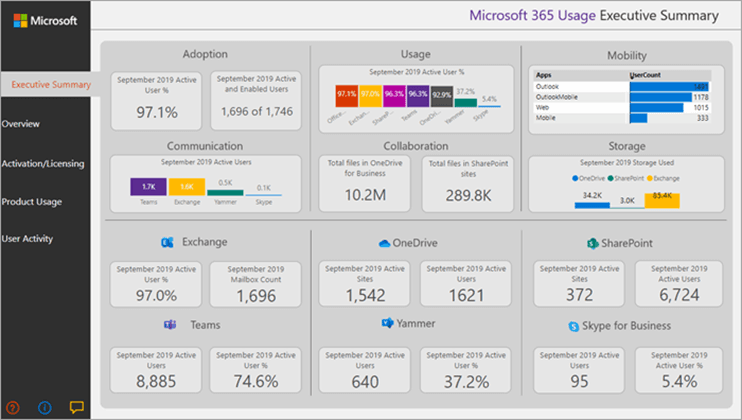
An example of the Microsoft 365 Usage Executive Summary, showcasing the deep analytics available for Exchange Online and other services
Conclusion: Making the Right Choice in 2025
The debate between Exchange Online and Exchange On-Premises is a classic battle of control versus convenience. As we stand in late 2025, the verdict for the vast majority of organizations is clear.
Exchange On-Premises remains a viable option for a shrinking niche of organizations with specific, stringent requirements: those that need absolute control over their data for sovereignty reasons, have complex legacy integrations that cannot be modernized, or operate in environments with no reliable internet connectivity. For this small group, the high cost and operational burden are a necessary trade-off for ultimate control.
Exchange Online has become the de facto standard for modern business communication. It offers a compelling package of lower TCO, superior security, effortless scalability, and continuous innovation that is nearly impossible for an in-house team to match. The deep integration with the Microsoft 365 ecosystem transforms email from a standalone utility into a connected hub for collaboration and productivity. By offloading the immense burden of infrastructure management, IT teams are freed to focus on strategic initiatives that drive business value.
For most businesses, the question is no longer *if* they should move to the cloud, but *how* and *when*. The combination of advanced security, predictable costs, and seamless integration makes Exchange Online the strategic choice for a forward-looking organization.
f your organization is ready to make the move, planning is everything. A successful transition requires deep expertise in both on-premises and cloud Exchange environments. Partnering with Medha Cloud ensures your migration is seamless, secure, and fully optimized — handled by experts who’ve done it all before.